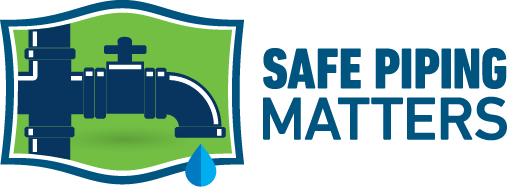Are Plastic Pipes Safe?
Piping material within a building plays a more critical role in safety than one might think, and homeowners, building owners, and contractors need to be aware of how piping material directly affects the safety of building occupants. Cheap piping made of PEX and PVC have become increasingly popular, appearing in over 60% of construction projects. Building scientists, firefighters, and plumbing professionals raise many questions about the increased use of these pipes, however, because they do have limitations, making it is critical to assess their safety and resiliency in both the short term and the long term.
Water Safety
Plastic pipes are synthetic materials comprising many complex chemicals. Scientists like Purdue University’s Andrew Whelton have done extensive research into how those chemicals interact with the water moving through the pipes. For example, Whelton’s research found that toluene, a neurotoxic, and MTBE, a carcinogen, both leached into drinking water from plastic pipe.
In fact, studies have demonstrated that 14% of all substances that leach from plastic piping are known carcinogens or reproductive toxins. A further 150 contaminants, over 70 of which are unregulated, have been found to leach into drinking water from plastic piping. Even the medically benign substances still have the potential to affect the smell and taste of water, not to mention fostering bacterial growth in pipes.
Unfortunately, there is currently not enough research to conclude definitively how chemical leaching from plastic may affect human health. Does the cheaper cost of using plastic piping outweigh the potential risks to and ambiguous health impacts of the drinking water it transports?
Plastic piping also presents a risk to safety through its susceptibility to permeation. Permeation occurs when external substances – such as fertilizers, pesticides and other chemicals present in soil and in ground water – can penetrate through this comparatively porous material and pass into the water supply. Such pollutants may be odorless, colorless, and tasteless, making them hard to detect. The mechanism of permeation events makes them more difficult to pinpoint. The AWWA has documented permeation incidents involving harmful substances like benzene, toluene, and others.
Fire Safety
Plastic piping is a fire hazard. When burned, plastic emits toxic, carcinogenic smoke that can cause severe health consequences when inhaled not only by fire victims, but also by firefighters and other first responders. Research has shown that in the event of a fire, plastic piping will release hydrochloric acid and other toxins that are so harmful the International Association of Firefighters (IAFF) and the United Association (a leading organization representing plumbers and other trades) have called for a ban on plastic piping within certain buildings – including healthcare facilities, high-rise residential structures, hospitals, and more. If professional plumbers and firefighters do not find plastic piping to be safe inside these critical structures, why should they be considered safe in any structure? Read more about toxic smoke and the dangers of plastic piping in fires here.
Plastic piping also complicates fire-stopping installations, increasing the potential of spreading flames throughout the building. An official building code report published by the International Code Council cites plastic material like piping as a “dangerous void” because of how it can melt, burn, and spread fires. Many plastics are intumescent materials, which means they grow in size in the event of fire, which create extreme fire hazards because of how they allow fires to spread. Sharron Halpert, a life safety consultant, has also advised building owners to be cautious about the use of plastic in their homes due to the fire hazards they have the potential to crease.
Anyone tasked with a decision on piping installation or replacement in a building should proceed with caution and understand the safety hazards that different piping materials have been known to present. The cheaper option is almost always inferior in quality, and that is especially true regarding piping and the safety risks that different materials pose. Piping materials that have been shown to pose safety risks and have long-term and short-term health effects should be avoided at all costs in the pipe material selection process.
